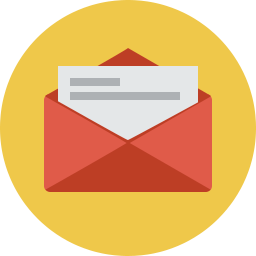 There are many elements that should be considered when structuring a successful email marketing campaign. From your initial strategy to your final design and technical implementation, there are many areas in which you can likely increase the return on your efforts! Here are just a few of the big items that we have found helpful over the years.
There are many elements that should be considered when structuring a successful email marketing campaign. From your initial strategy to your final design and technical implementation, there are many areas in which you can likely increase the return on your efforts! Here are just a few of the big items that we have found helpful over the years.
Business Logic
Before you even open your email editor, it’s important to sit down and sketch out a few key business elements to your campaign. Consider your your core goals, to whom you’re writing, and what you want your audience to get out of your email. Defining these objectives in advance is key to building campaigns that will result in conversions.
Start with your target customer.
- Who is reading this message and how are you hoping to affect them?
- Do you have something to sell them, or need for them to walk away with some important piece of information?
- Are they likely to be at work and sifting through a hundred emails in a hurry, or are they likely to have more time to read through and thoroughly digest your content?
Each answer should influence the length of your content and the general frequency of your campaigns.
As far as your core message goes, we recommend keeping things as simple as possible. This is a good rule for all content, and your email marketing is no exception. The more people have to read, the less likely it is that your core message will really stick. If you don’t lock down your core business/marketing goals from the very beginning, this sort of KISS efficiency will be difficult, if not impossible.
Technical Considerations
Once you have your business goals in place, most would skip straight to designing the campaign. But before we get to that point, there are a few technical considerations that are important to understand.
The first consideration is that your readers are all all using different devices and difference email service providers. Different devices obviously have different resolutions and different connection speeds, so it is important to design your campaigns for the simplest common denominator. Keep your layouts simple and use images sparingly so your readers don’t have to download large files in order to see your message.
Different email providers also play a major role here. Certain providers have different policies for how they handle displaying images in messages. Even if your readers have already explicitly opted into your campaigns, it is possible your images may be blocked by default on initial load. It’s also possible that the ALT text you provide may be ignored by some providers. So while images are great to use in your emails, it’s usually unwise to depend on them too much.
If your campaigns suffer from technical difficulties, then your strategy and content won’t matter, and your campaigns won’t convert.
Design & Content Considerations
As with all content on the internet, your presentation matters. Keeping your copy succinct and well-written will go a long way in making sure you connect with your reader. Improve your conversion rates by designing streamlined content that is easy to understand on all device sizes, with clear calls-to-action.
Make sure your content reads well on both small screens as well as large screens. Most popular email marketing services provide base themes that will let you have a central content window that can collapse for mobile or expand a bit for larger screens. But even with this, we suggest really looking at how your text ends up reading in the different environments.
If your copy blocks look too large on mobile or too small on desktops, consider condensing or expanding them a bit to balance the design. Also, look at your line-heights. Do your paragraphs look too spaced out or too cramped? You can often adjust this with a little bit of custom inline style attributes in your HTML.
Proofread!
Anyone in this field has probably sent out a campaign with a mistake in it. We’ve all been there. It seems that no matter how many times you read through something, mistakes still come through!
Force yourself and a few other reliable team members to proofread your campaigns. Fresh eyes and multiple passes make a big difference, so try to avoid rushing a campaign out. Being able to proofread a campaign multiple times is good, but having time to digest in between readings is better. Of course, having multiple sets of eyes doing the same thing will help!
Also, have a checklist and be methodical about the things you are checking. For example, make sure you’ve specifically checked your message snippet, or the bit of text that will appear in the preview pane for most of your readers when they see your message in their inbox. This is one example of an element that often gets overlooked, but having it on a specific list of pre-launch items to double check might save you from missing it!
Extended Analytics
Measuring your performance is critical. Most email marketing services will have built-in analytics that will give you insight into general open and click-through rates on your campaigns. However, you can often also integrate your website’s Google Analytics into your campaigns and get additional insight into how many of those click-throughs actually end up converting into macro-goals like purchases or lead form submissions.

